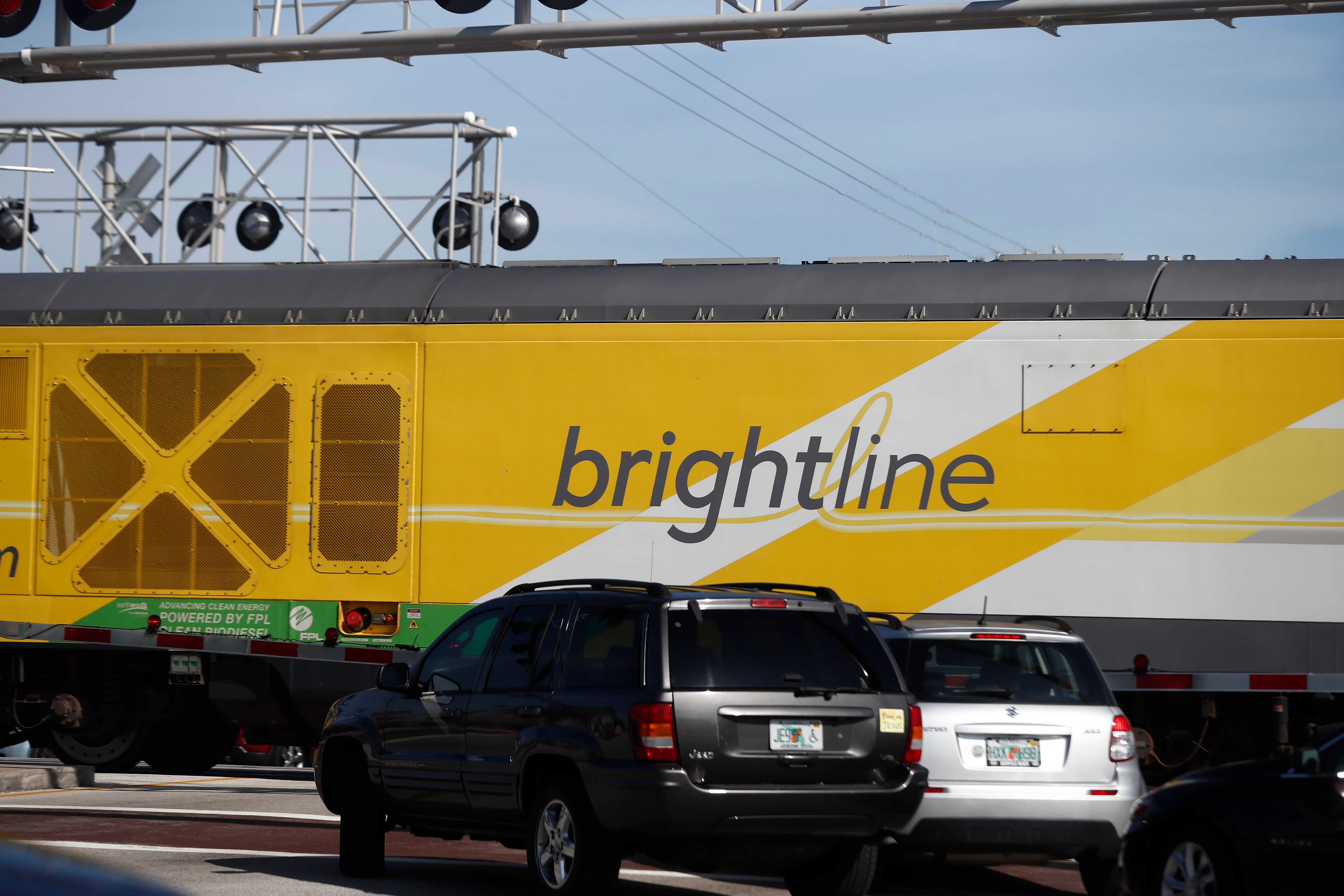Florida passenger train kills man weeks after reopening
A train belonging to Florida’s higher-speed passenger rail service struck and killed a man walking on the tracks just weeks after the company reopened from the pandemic

Your support helps us to tell the story
From reproductive rights to climate change to Big Tech, The Independent is on the ground when the story is developing. Whether it's investigating the financials of Elon Musk's pro-Trump PAC or producing our latest documentary, 'The A Word', which shines a light on the American women fighting for reproductive rights, we know how important it is to parse out the facts from the messaging.
At such a critical moment in US history, we need reporters on the ground. Your donation allows us to keep sending journalists to speak to both sides of the story.
The Independent is trusted by Americans across the entire political spectrum. And unlike many other quality news outlets, we choose not to lock Americans out of our reporting and analysis with paywalls. We believe quality journalism should be available to everyone, paid for by those who can afford it.
Your support makes all the difference.A train belonging to Florida s higher-speed passenger rail service struck and killed a man walking on the tracks just weeks after the company reopened from the pandemic.
The Brightline train struck the pedestrian Tuesday morning in North Miami Beach as the man didn't move as the train sounded its horn, officials said. North Miami Beach police did not immediately return a call Wednesday seeking further details.
The death is at least the 49th involving a Brightline train since the Miami to West Palm Beach line launched in mid-2017 and the first since it reopened last month after a 19-month closure due to the pandemic. A Brightline train on a July test run fatally struck a bicyclist.
An Associated Press examination of federal records shows that Brightline has more fatalities per mile than any U.S. railroad, one about every 31,000 miles (50,000 kilometers). Since 2018, an average of about 1,200 people are fatally struck by trains annually in the United States.
None of the deaths involving Brightline have been blamed on its equipment or crews. Investigations showed most victims were either suicidal, intoxicated, mentally ill or had gone around barriers at an intersection in an attempt to beat the trains, which travel up to 79 mph (128 kph) through densely populated areas.
Brightline said in a statement Wednesday that “safety is a topic that we will not stop talking about and we are asking the community, law enforcement, elected officials and members of the media to use their platforms and help amplify a consistent safety message: stay off the tracks and obey all warning signs.”
Brightline has installed infrared detectors that will warn engineers if anyone is lurking near the tracks so they can slow down or stop. The company has added more fencing and landscaping to make track access more difficult and is also installing red-light cameras at crossings that will allow police to ticket drivers who go around guardrails. It is testing drones to monitor the tracks.
Excluding five small railroads that average less than 100,000 miles (160,000 kilometers) traveled per year, where one or two fatal accidents skew their numbers, the railroad with the next worst rate to Brightline is central Florida's SunRail, which since mid-2017 has had at least 15 deaths or about one every 100,000 miles, according to federal records.
TriRail, a commuter service that operates in the same area as Brightline, averages about one death every 115,000 miles.
Brightline is finishing a line that will link South Florida to Orlando that is scheduled to be completed in about a year. It is also working on a line that would connect Southern California with Las Vegas.